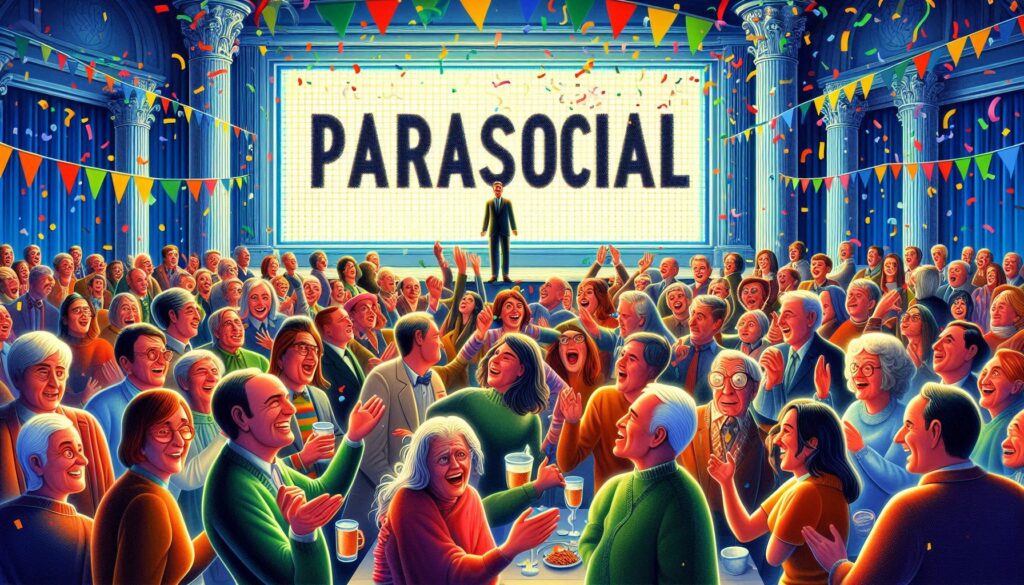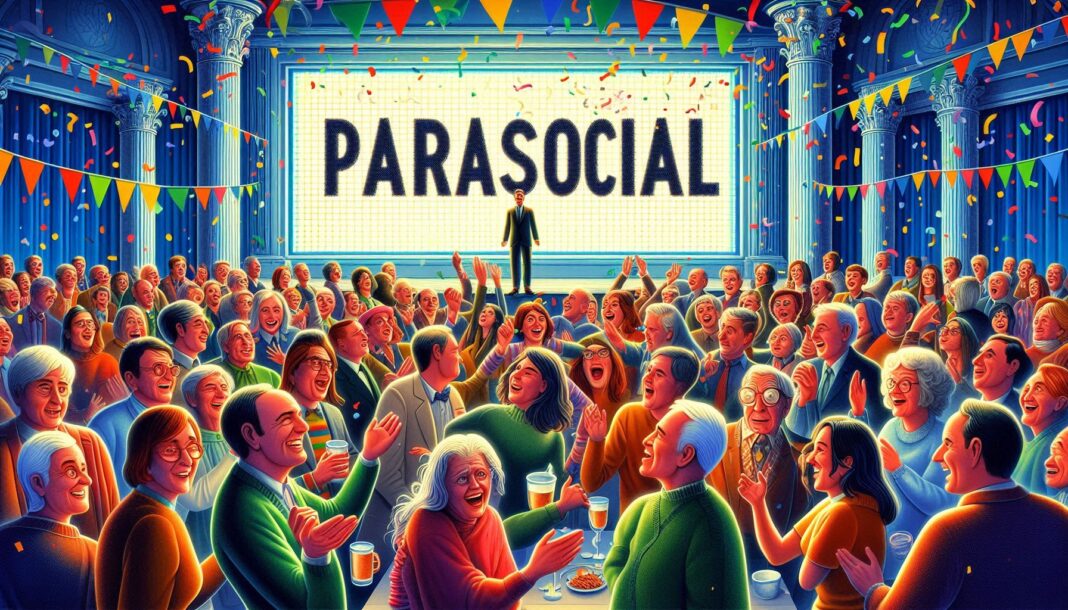Cambridge Dictionary has selected “parasocial” as its 2025 Word of the Year, reflecting the rise of one-sided emotional bonds people form with celebrities, influencers, fictional characters, and AI chatbots. Spikes in online searches and growing public discussion highlight how these digital-age connections have moved from academic terminology into mainstream culture.

The Cambridge Dictionary has announced its Word of the Year for 2025, and it is a choice that reflects one of the most fascinating cultural shifts of the past decade. The winning term, “parasocial,” once confined to academic discussions in psychology and media studies, has now entered the mainstream vocabulary with surprising force. Defined as an adjective “involving or relating to a connection that someone feels between themselves and a famous person they do not know, a character in a book, film, TV series, etc., or an artificial intelligence,” the word captures how deeply one-sided emotional bonds have seeped into modern life. In 2025, these connections have become impossible to ignore—shaping digital behaviour, influencing public conversations, and reshaping what it means to feel close to someone in an increasingly virtual world.
The rise of “parasocial” as a commonly used word speaks to the profound ways people interact with public figures and digital personalities today. Whether it is fans forming emotional attachments to global icons like Taylor Swift, audiences feeling personally invested in YouTubers or streamers they watch daily, or millions of users building conversational familiarity with AI chatbots, the sense of connection has become both intimate and asymmetrical. The person or entity on the other side of the screen may have no awareness of the individual, yet the bond feels real to those experiencing it. This cultural moment is precisely why Cambridge Dictionary editors chose the term to define the year. As Colin McIntosh of Cambridge Dictionary explains, “What was once a specialist academic term has become mainstream. Millions of people are engaged in parasocial relationships; many more are simply intrigued by their rise.”
That intrigue has been measurable. According to Cambridge Dictionary, lookups for “parasocial” on its website saw dramatic spikes throughout the year. These surges often corresponded with major cultural moments—celebrity controversies, viral internet phenomena, and public debates around artificial intelligence. As AI tools grew more natural and conversational, many users began to express how interacting with chatbots felt surprisingly personal. The boundary between functional utility and emotional connection became increasingly blurry, fueling discussions about how these emerging relationships should be understood. In that sense, the word reflects not just a trend in language, but a shift in human behaviour brought on by technological evolution and digital media consumption.
The growth of parasocial relationships is not new, but their scale in 2025 is unprecedented. Historically, the term was used to describe audience attachments to radio hosts or television personalities in the mid-20th century. Today, however, social media and streaming platforms have radically amplified the phenomenon. Influencers share daily routines, life updates, vulnerabilities, and behind-the-scenes moments—all designed to foster relatability and closeness. Fans, in turn, feel they truly “know” these individuals. The relationship remains unidirectional, but emotionally potent. This year saw several high-profile cases where fans’ parasocial attachments sparked public debates, especially around boundaries, privacy, and the responsibilities of public figures.
Artificial intelligence has added an entirely new dimension to this phenomenon. While parasocial connections with celebrities have existed for decades, AI introduces relationships where the “other side” can respond—though still without genuine mutual awareness. Conversational AI systems, from chat assistants to personalized virtual companions, have become more sophisticated and emotionally expressive. Their ability to simulate empathy, humor, and attentiveness has only deepened the sense of personal connection users feel. Even though these systems are not conscious and do not form real relationships, they can create powerful illusions of reciprocity. This blending of simulated intimacy with technological capability is one of the defining narratives of 2025.
The term “parasocial” also reflects growing societal concern about the impact of these relationships. Mental health professionals have noted both positive and negative effects. On one hand, parasocial bonds can offer comfort, motivation, and a sense of belonging, especially for individuals who feel isolated. Fans often find community with others who share similar attachments, turning solitary admiration into collective experience. On the other hand, unhealthy dependencies can form when people overly invest emotionally in individuals or AI systems that cannot reciprocate. Such imbalanced attachments can distort expectations, create emotional vulnerability, and blur the line between reality and perception. These concerns contributed to public engagement with the term throughout the year, further fueling dictionary lookups.
At the same time, parasocial relationships have become deeply embedded in digital economies. Influencers build careers around cultivating perceived intimacy with audiences, often referring to followers as “family” or “besties.” Entertainment companies design character arcs and marketing campaigns around building lasting emotional investment. AI companies, too, navigate the delicate balance between offering helpful conversational experiences and avoiding designs that intentionally foster dependency. As more people become aware of the mechanics behind these connections, conversations about ethics, transparency, and responsibility have intensified.
Cambridge’s selection of “parasocial” as the Word of the Year serves as a linguistic snapshot of this ongoing shift. Words chosen for this annual recognition often reflect larger cultural transformations, and in this case, the choice captures the evolving relationship between humans and the digital world. The term itself is not new, but its widespread adoption highlights how language evolves alongside society. Once tucked away in academic journals, it is now part of everyday conversation—appearing on social media, in news articles, in psychological discussions, and in online debates.
The ubiquity of parasocial relationships also reveals a profound truth about human nature: people are wired for connection. Even when relationships are mediated through screens, feeds, and algorithms, the emotional impulse to seek companionship, understanding, and closeness remains strong. In many ways, the rise of “parasocial” serves as a mirror held up to modern society. It shows how the digital architecture of contemporary life can amplify timeless human tendencies, shaping interactions in ways previous generations could not have imagined.
Moreover, the selection of the word underscores ongoing reflections about authenticity. With an increasing portion of human experience unfolding online, distinguishing between genuine and constructed intimacy has become a central conversation. Public figures carefully curate personas, while AI systems are designed to generate convincingly human dialogue. Consumers now navigate a landscape where emotional cues can be algorithmically crafted, making awareness essential. The term “parasocial” equips people with a vocabulary to articulate this complex dynamic. Its rise reflects collective attempts to understand, name, and navigate a phenomenon that will only continue to expand as technology advances.
For Cambridge Dictionary, choosing a Word of the Year is not just a linguistic exercise; it is a cultural observation. The decision to highlight “parasocial” acknowledges how everyday life has shifted toward digital companionship. It recognizes that millions of people now relate to public figures—real or virtual—in ways that are deeply emotional yet fundamentally one-sided. It points to a world where entertainment, social connection, and even personal support can come from people or systems that exist primarily through screens.
As 2025 continues, the conversation around parasocial relationships is unlikely to fade. In fact, it may become even more central as technologies evolve and as boundaries between human and artificial interaction further blur. The word will remain a useful tool for understanding these shifts, helping individuals and society navigate the changing terrain of emotion in the digital age. Cambridge Dictionary’s choice is therefore more than a linguistic milestone—it is a recognition of a defining cultural pattern, one shaped by celebrities, influencers, and AI, but ultimately rooted in humanity’s enduring desire to connect, even when the connection flows only one way.







